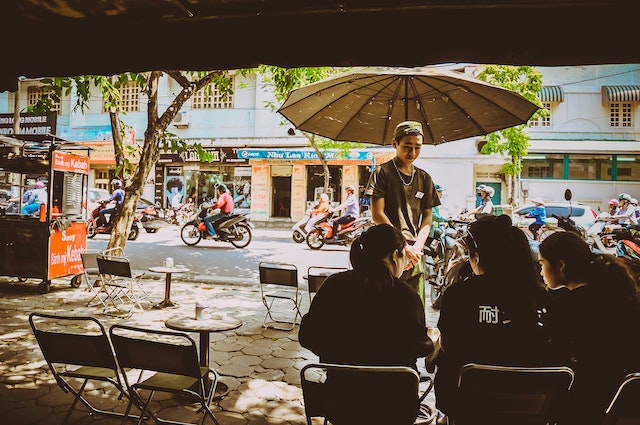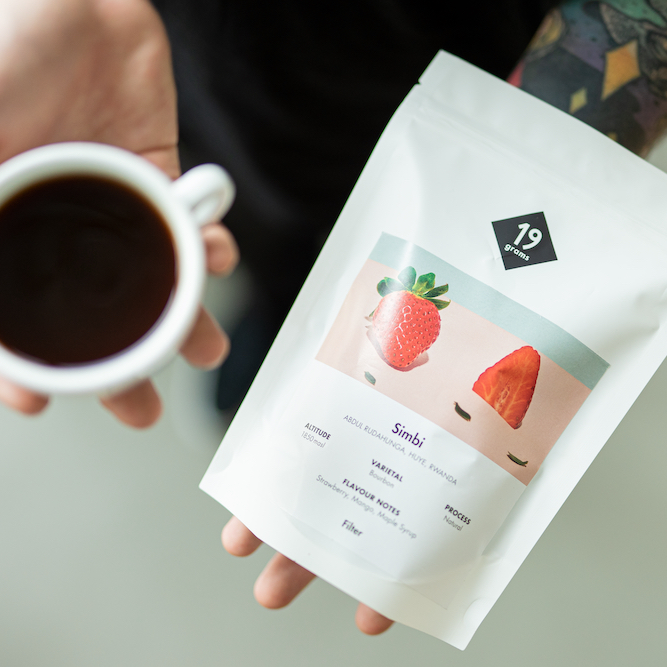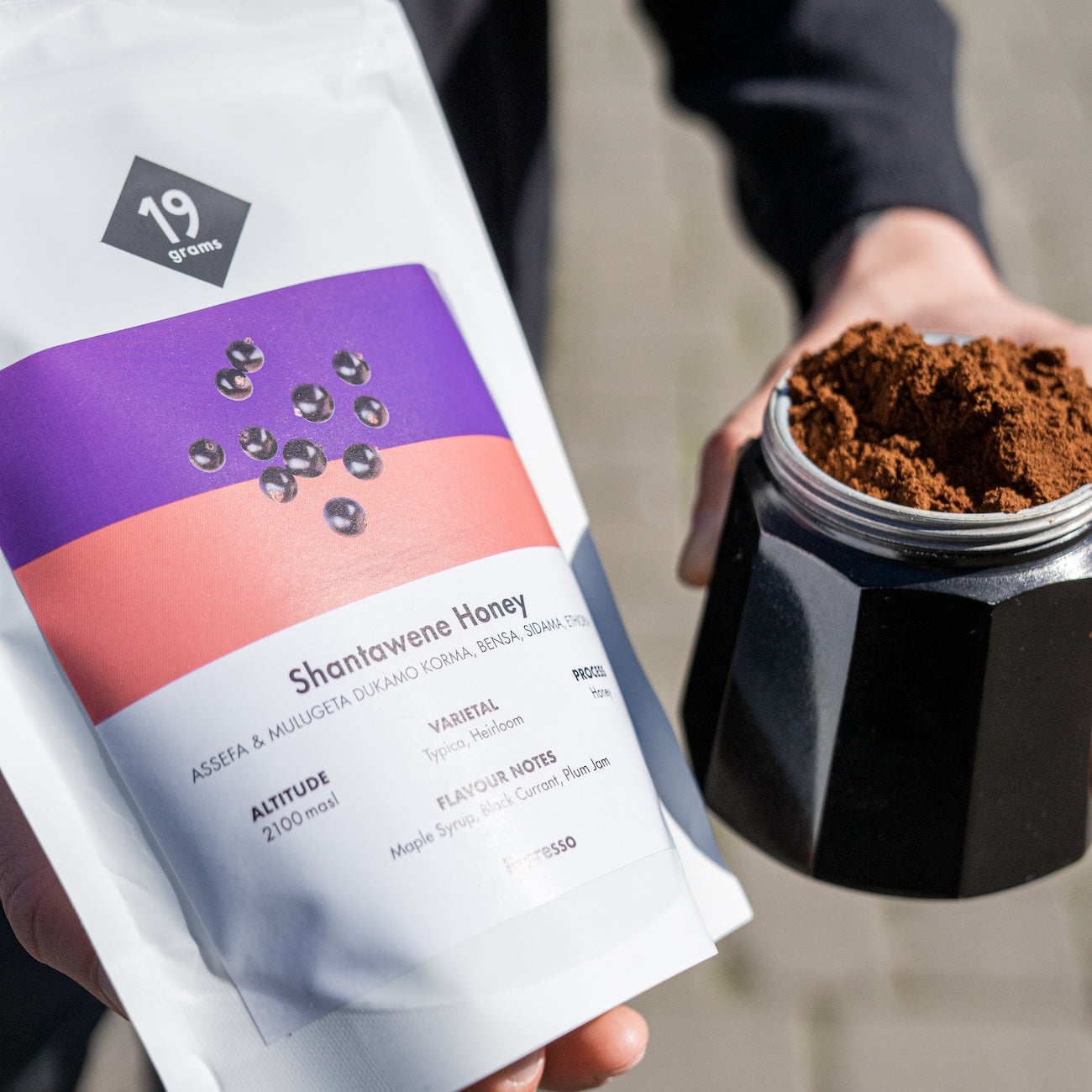Although Vietnam is located on the "coffee belt," coffee wasn't introduced there until 1857 when a French Catholic Priest brought an Arabica tree with him. Initially most of the coffee was planted in the north and central regions of Vietnam, though they would eventually be grown all over the country. In 1908, French colonists introduced Robusta and Excelsa coffee to Vietnam, primarily in the central highlands. Today, most Vietnamese coffee beans are Robusta beans grown in the Central Highlands, particularly in the Da Lat region. The region's high altitude, combined with mountains, sunshine, rain, and fertile soil, provides ideal conditions for both Robusta and Arabica beans. By the end of the 1990s, Vietnam had grown to become the leading coffee producer in Southeast Asia and the second-largest producer in the world, behind only Brazil. Today, Vietnam produces mostly Robusta coffee, accounting for an estimated 20 percent of global coffee production and 40 percent of all robusta beans.
Vietnam's resourcefulness and creativity shine through in its coffee culture. Just as they transformed French baguettes into bánh mì, Vietnamese coffee has its own unique twist. Originally born out of necessity due to the lack of a dairy farming industry, Vietnamese coffee adopted sweetened condensed milk to complement the dark roast. This innovation quickly evolved into the iconic iced coffee that has become a staple in Vietnamese café culture. Despite containing a higher caffeine concentration, Robusta is considered an inferior bean to Arabica. However, condensed milk turned Vietnamese coffee from a functional beverage into an extraordinary one.
It's a testament to the incredible beans they produce. Vietnamese coffee culture goes far beyond the usual lattes and cappuccinos, offering a unique experience you must try. Coffee isn't just a beverage in Vietnam; it's a way of life. Drinking coffee in Vietnam is a social activity, allowing for conversations or "bà tám" and catching up with friends. Coffee serves as a way for people to connect with their immediate surroundings before starting their day. Many cafes in Vietnam are open-air, with small plastic stools on the street, providing a fantastic view of the bustling street life. From the early hours of the morning until late at night, cafes and street vendors are open, catering to coffee lovers at all hours of the day. Locals can enjoy a cup of coffee at 10 pm and still sleep at night with no problems.
When in Vietnam, it's important to embrace the local coffee culture. Avoid drinking coffee on an empty stomach as Vietnamese coffee is quite strong. Modern cafes often serve cakes or snacks to complement your coffee and avoid any gastrointestinal issues. If you prefer less sugar, ask for "ca phe den," which is black coffee with no sugar, or request coffee with reduced sugar. White coffee always includes condensed milk. If you prefer a milder coffee, order "bac xiu" or coffee with extra condensed milk, creating a creamier version. Remember that coffee is best enjoyed with friends, providing an opportunity to sit back, relax, and chat. Two cups of coffee are always better than one. Keep in mind that coffee is typically served iced (da) unless you specifically ask for it hot (nong).
Traditionally, Vietnamese coffee is brewed individually using a phin filter, consisting of a small cup, a filter chamber, and a lid that doubles as a container to collect the aromatic black coffee as it drips down. The process of watching the coffee slowly drip forces you to slow down, sit back, and savour the moment.
Like most countries, different parts of Vietnam have developed their own unique ways to enjoy coffee over time. When ordering "ca phe Hanoi," you'll experience coffee the way northerners prefer it. This short coffee has a thick consistency and is usually served with iced green tea on the side, meant to be sipped like a fine whiskey. To cleanse your palate between sips, take a sip of the green tea. On the other hand, "ca phe Saigon" is the southern style, served in a tall glass filled with ice and enjoyed with a straw. If you don't specify, you'll get the cafe's specialty. In central Vietnam, most cafes offer both styles but often have their own preference. If you have a sweet tooth, asking for "ca phe sua" will add a centimeter of condensed milk to either coffee variation. Simply give it a stir and indulge in the delightful flavours.
Before you try anything else in Vietnam, we should start with a classic. The famous Vietnamese Iced coffee or, cà phê đá. It's a refreshing blend of locally-sourced Robusta beans, water, and sweetened condensed milk. You'll find it enjoyed in abundance in every cafe on every street in Vietnam, providing a perfect balance of dark roast and sweet flavors. On a hot summer day, cà phê đá should definitely replace iced lattes as your coffee of choice.
Another option unique to Vietnam is egg coffee, which has gained widespread attention online. Vietnamese hot egg coffee is the ideal drink to warm your soul, originating from Hanoi in the 1940s when milk was scarce. This unique creation replaces milk with whipped egg yolk. The creamy egg yolk and sweetened condensed milk are combined with traditionally brewed Vietnamese coffee, creating a layer of sweet foam similar to a cappuccino. The use of egg yolk instead of milk made this beverage popular during the '80s when Vietnam's coffee industry began to flourish. The rich and frothy foam floating on top of the cup will make you fall in love with this drink, especially on a cold winter day.
Vietnamese coconut coffee is another delightful option, particularly popular in Hanoi. This sweet, strong, and icy beverage is often described as a coffee with a coconut smoothie. Blending traditional coffee with coconut milk, fresh milk, and condensed milk creates a tropical coffee cocktail perfect for cooling down during the summer heat.
Yogurt coffee is yet another unique Vietnamese combination. This addictive drink combines yogurt, sweetened condensed milk, ice, and coffee. The combination of yogurt's sourness, coffee's bitterness, and condensed milk's sweetness results in a deliciously refreshing beverage. It's especially popular in Hanoi, where many cafes make their own fresh yogurt. This creamy and rich drink can be served with various toppings like fresh fruit or fermented rice.
For those with a sweet tooth, white coffee is the perfect choice. It's a milder variation preferred by those who are not accustomed to the bitterness of the darker roasted Robusta coffee. Iced Vietnamese coffee, consisting of coffee, condensed milk, and ice, can be made even sweeter by adding extra condensed milk, creating a coffee variation known as "bac xiu."
If you're in Vietnam, and eager to explore the country’s coffee scene, here are four coffee shops from different parts of the country that are definitely worth a visit:
The Workshop, Ho Chi Minh City: HCMC's first specialty coffee roaster offers a trendy and unique space where you can find various coffee styles. They source their beans from Da Lat and Colombia, providing a diverse range of flavors.
Cộng Cà Phê, Hanoi: This familiar name in Vietnam offers a distinctive cafe experience with its theme of old Communist-era Vietnam. They serve espresso-based drinks and other options, allowing you to immerse yourself in the country's history while enjoying your coffee.
43 Coffee Factory Roaster, Da Nang: Known for their dedication to third-wave coffee, 43 Coffee Factory focuses on roasting the finest batches of coffee. They even provide on-site training for baristas interested in refining their craft. Sample the best-brewed and well-roasted coffee varieties at this establishment.
La Viet, Da Lat: Located in the heart of Da Lat, the coffee-growing region of the Central Highlands, La Viet offers a warehouse-style space and an impressive selection of hand-picked, carefully sorted, and processed Arabica beans. Choose from three roasting levels and enjoy your coffee using various brewing methods, including pour-over, slow drip, or creamy latte.
Vietnam is a long way from Germany, and we don't have Robusta beans here at 19grams. But we can recommend our Orang Utan beans for a nice Vietnamese coffee da or nong with notes of caramel and dark chocolate.






